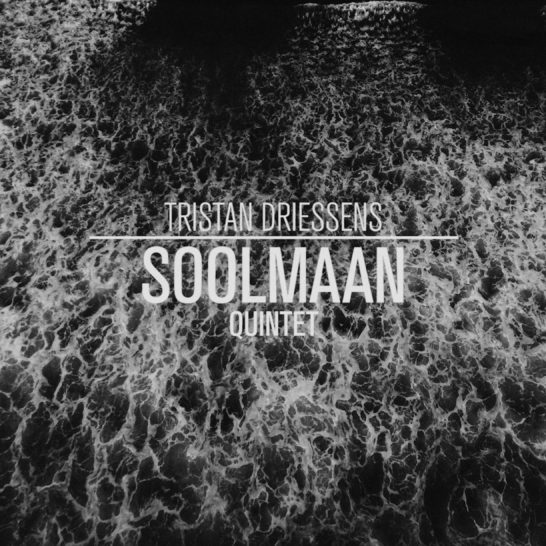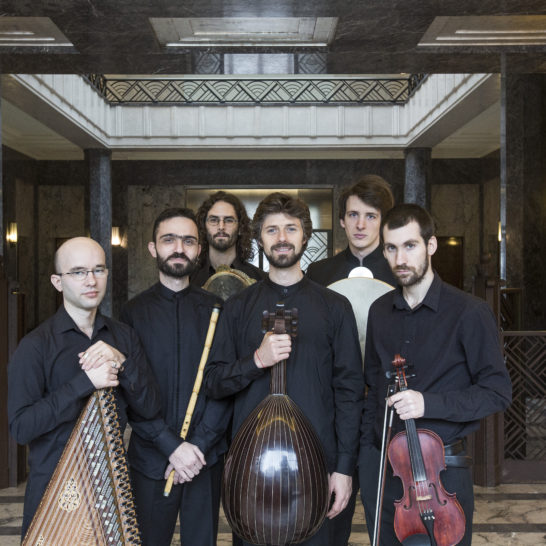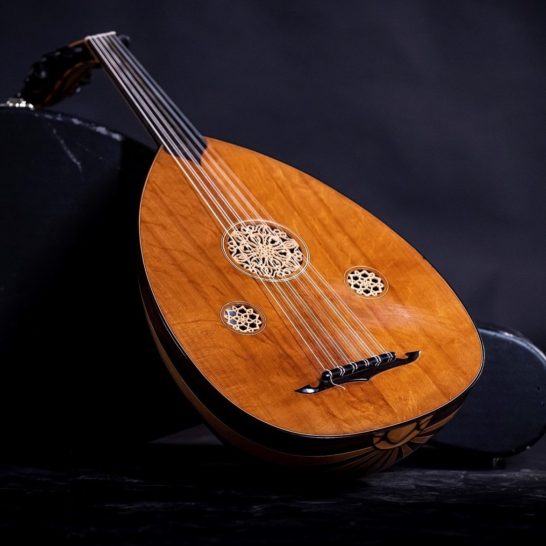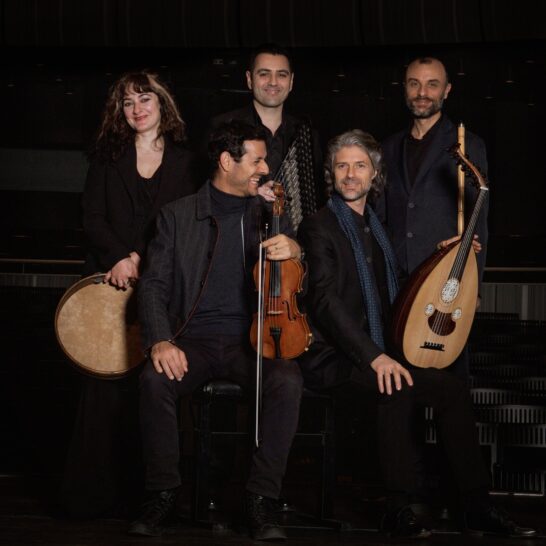Quartet line-up: Tristan Driessens: oud, composition, Christos Barbas: ney, piano, lavta, vocals, Nathan Daems: tenor saxophone, ney, kaval, Annemie Osborne: cello.
Other members: Andrea Piccioni: tamburello, bendir, riqq, Levent Yildirim: doholla, bendir, percussion set-up, Pavlos Spyropoulos: double bass, Bijan Chemirani: tombak, saz, percussion set-up.
DESCRIPTION
During the first years of his career, Belgian oud player Tristan Driessens mainly devoted himself to classical Ottoman court music. In 2011 he founded the Lâmekân Ensemble, which spanning a ten year existence recorded four acclaimed albums, performed around Europe, Turkey and Central Asia and collaborated with masters such as Kudsi Erguner and Derya Türkan. After completing his training in Istanbul under the supervision of oud virtuoso Necati Çelik, Tristan Driessens returned home in 2016. That’s when he founded Soolmaan, an ensemble with varying line-ups for which he writes instrumental compositions that reflect his multi-sides identity as a composer.
In its debut album Letters to Handenberg (Homerecords, 2017), the city of Istanbul is present as a common thread. With compositions rooted in the modal music of the East, Tristan Driessens creates a dialogue with his homeland, intertwining elements from jazz and folk music. The press described the music as ‘oriental chamber jazz’. In 2022, Tristan Driessens wrote a cycle of new compositions as part of his creative trajectory as an artist-in-residence at the Concertgebouw of Bruges. Soolmaan became a six piece line-up consisting of Belgian saxophonist and flutenist Nathan Daems, Greek ney player, pianist and singer Christos Barbas, Italian and Turkish percussion pioneers Andrea Piccioni and Levent Yildirim and Luxembourg classical cellist Annemie Osborne. Along the same lines as Letters to Handenberg, Kashgul, Books I & II draws its inspiration from various Mediterranean and Eastern traditions – Ottoman makam, Indian raga, Anatolian halk muzigi – which are interwoven with an idiom that may be referred to as contemporary modal music. The album contain original compositions as well as a portion of rearrangements of works by other composers: Sandhya Raga and Kirwani Raag, by Indian composers Ravi Shankar and Amjad Ali Khan and Lost Life, by Art Pepper.
PRESS
One is to imagine landscapes carried by music, and they are beautiful, sometimes stormy, sometimes nostalgic.
Le Soir***** Thanks to its free improvisation and its instrumentation of almost sacred purity, Letters to Handenberg is a release highly recommended to be discovered.
Written In Music (BE)A timeless masterpiece without borders.
Moors Magazine (BE)The Soolmaan Ensemble unites eclectic musical references in a timeless as well as contemporary expression. Influences from Eastern and Western classical music traditions and contemporary modal music fuse into highly versatile and inspirational sounds where improvisation is the connecting factor. A mystical element derived from several traditions shines through their music.
Kefa Moras (ES)Tristan and his crew combine improvisational elements with jazzy dramaturgy and enchanting harmonies.
InMusic (DE)This music is timeless, and carries an almost unbearable calm and warmth.
New folk Sounds (NL)




